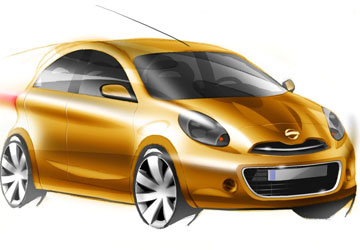 The big news for the fortnight in the motoring world has to be the Daimler-Renault-Nissan tie-up. Internationally, what this achieves is cross participation in equity between them, as well as sharing in resources for further research, development and production. On the domestic front, it gets even more interesting. M&M has Renault withdrawing from the Logan, which said car was a bit of a non-starter in India. Ashok Leyland (Hindujas) will move deeper in with Renault-Nissan, though how that will impact the traditional relationship between Tata Motors and Daimler remains to be seen.
The big news for the fortnight in the motoring world has to be the Daimler-Renault-Nissan tie-up. Internationally, what this achieves is cross participation in equity between them, as well as sharing in resources for further research, development and production. On the domestic front, it gets even more interesting. M&M has Renault withdrawing from the Logan, which said car was a bit of a non-starter in India. Ashok Leyland (Hindujas) will move deeper in with Renault-Nissan, though how that will impact the traditional relationship between Tata Motors and Daimler remains to be seen.
But it is the complete concept of a motor vehicle’s brand association with a particular country that this tie-up finally throws out of the window. Although it’s been a while coming, it has been visible to all of us on our streets ever since Maruti-Suzuki evolved into an Indian brand worldwide, regardless of where the cars were actually built—India, Europe or Japan. Now this concept goes global in a big way. General Motors has Daewoo, Ford has Chinese friends, Daimler was American but is now French, Japanese and much more; and everybody wants to sell more in India and China.
So we will have luxury cars from Nissan and small economy wheels from Daimler, badged any of a dozen options. And most interestingly, if grapevine is to be believed, some sort of massive global tie-up seems to be in the offing for another small car. The Tata Nano appears to be a tough act to beat and is currently proving its paces in parts of the world which were traditionally "home" markets for the colonial-era manufacturers from Europe.
This is worrying them, especially in Africa, because despite domestic reports on a few Tata Nanos catching fire here and there in India, this small car is rapidly evading the walls blocking it and running into the multiple open doors of success. If growth in India is in the private-taxi business, then the Nano has already reached into the space till now occupied by three-wheeler auto-rickshaws. This correspondent has said it before, and reiterates it here—the Tata Nano will do to cheap local public transport what the Tata Ace did to short and small cargo movement. It will revolutionise it like the Vespa scooter did decades ago.— Veeresh Malik